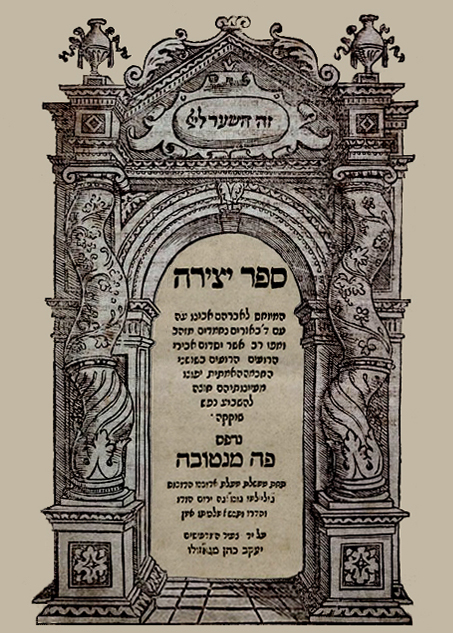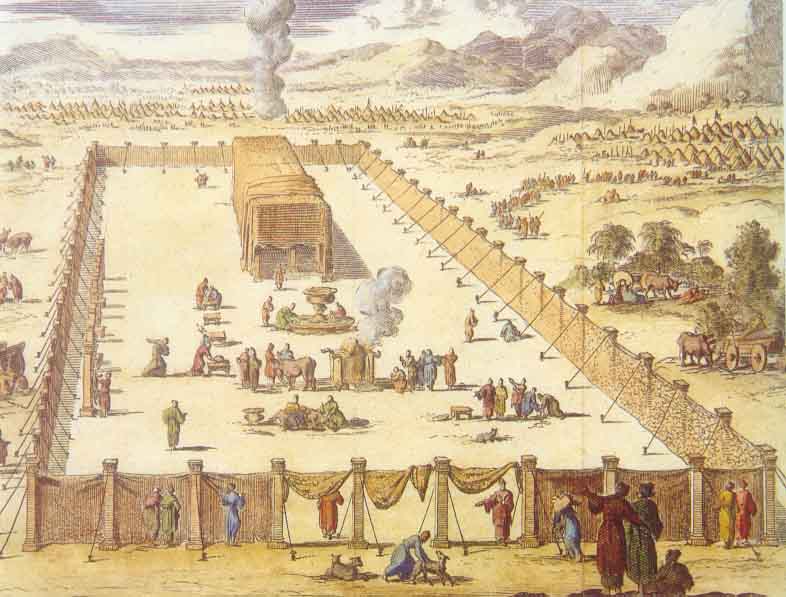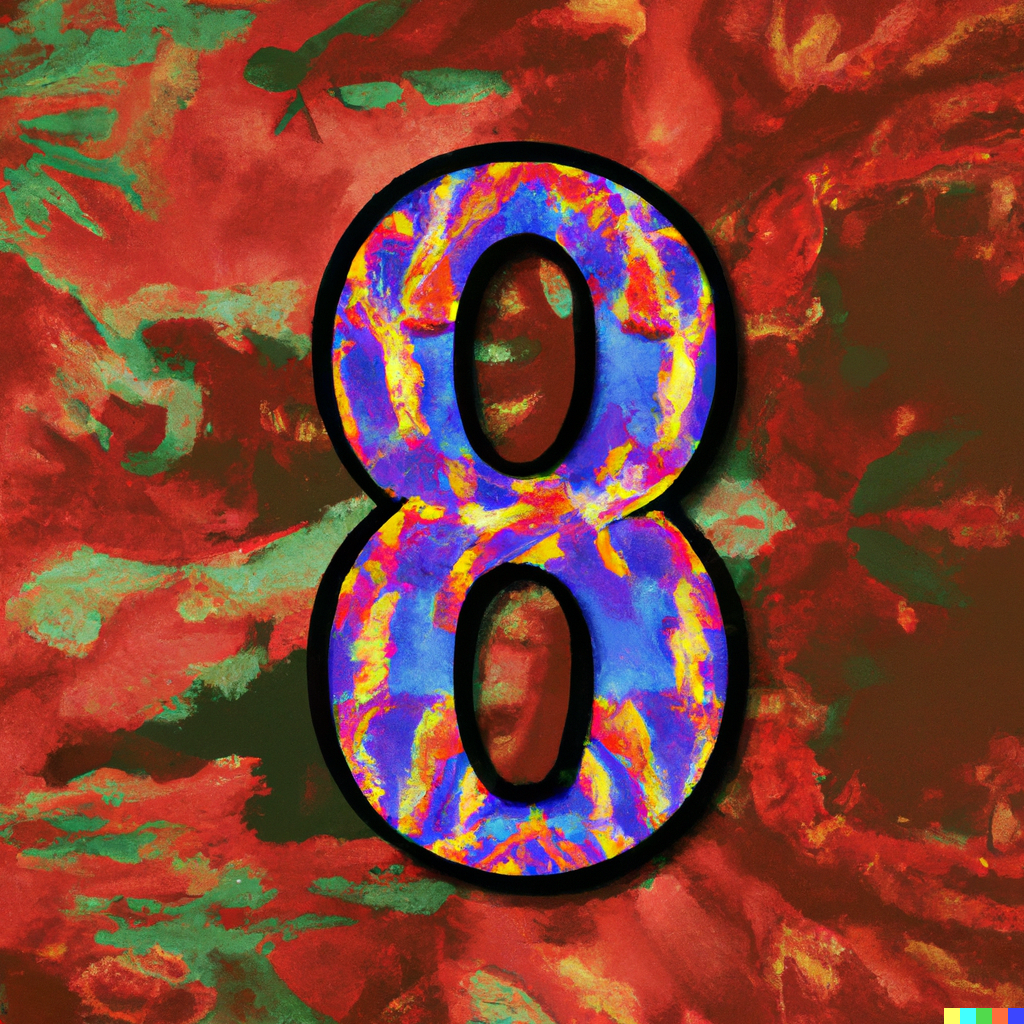And on the eighth day, the flesh of his foreskin shall be circumcised.
Leviticus 12:3
In the Torah portion of Tazria, we are commanded to circumcise a male child on the eighth day. In the previous Torah portion, Shemini, we read that the dedication of the Tabernacle (Mishkan) also took eight days, and only on the eighth day the Shechinah (“divine presence”) rested on it. What is the significance of the eighth day?

Chasidic philosophy interprets the eighth day as the day after seven days. In numerous writings (ma’amarim) and talks (siḥot), the Rebbes of Chabad stated that seven days represent nature, whereas the eighth day is a day above nature.[1] The eighth day represents the supernatural.
Why, you may ask, do the seven days represent nature? We are told that the number seven represents seven days of the week. G‑d created the world in seven days, and many natural cycles—the answer goes—are anchored in the number seven. For example, besides seven days in a week, there are seven weeks of the Counting of the Omer, seven years in the Sabbatical cycle, Shmitah, seven Sabbatical cycles in Jubilee, Yovel, and seven millennia—the cosmic Shmitah.[2]
The only problem is that there is nothing natural in any of these examples. There is nothing natural about G‑d creating the world in seven days; there is nothing natural in G‑d commanding us in the Torah to count seven weeks of Omer, or to observe the Sabbatical Year (Shmitah), or the Jubilee (Yovel). Arguably, there is nothing supernatural in the number eight—simply the next number after seven, or the first day (week, year, shmitah, or millennium) of the next weekly (or Sabbatical, Jubilee, or cosmic shmitah) cycle. How are we to understand this?
I looked around for natural phenomena that revolved around the number seven. I found a few inconsequential examples. The moon goes through a cycle of eight phases, but four of them are prominent: new moon, waxing crescent, full moon, and waning crescent. These phases roughly last around seven days each. First, it is not a perfect seven-day cycle, and second, there are really eight phases, not four. There are seven visible planets in the solar system, which was important to our ancestors but not so much to us. In reality, there are more than seven planets in the solar system.[3] I struggled to find any meaningful natural phenomenon that revolved around number seven. Physics textbooks and research papers offered no hint. Finally, I found the answer in the most unexpected source—the oldest surviving book of Kabbalah, Sefer Yetzirah (The Book of Formation).[4]

This ancient book states:[5]
A depth of beginning, a depth of end;
Sefer Yetzirah
A depth of good, a depth of evil;
A depth of above, a depth of below;
A depth of east, a depth of west;
A depth of north, a depth of south.
A “depth of the beginning” and a “depth of the end” are past and future—the time dimension. A “depth of above” and a “depth of below” are two opposite directions in one spatial dimension.[6] A “depth of east” and a “depth of west” are opposite directions in the second spatial dimension. A “depth of north” and a “depth of south” are opposite directions in the third spatial dimension. Thus, we have six spatial directions (up-down, right-left, front-back) plus the dimension of time—seven in total.[7]
The above passage from Sefer Yetzirah sheds light on the significance of the number seven in nature, representing six directions in space and time.
However, Sefer Yetzirah does not stop there. Another verse holds the key to the puzzle: “A depth of good, a depth of evil.” This is interpreted as the spiritual or moral dimension. This represents the eighth day—a day above space and time, above nature; a day that points to a higher moral and spiritual purpose to which a Jew must dedicate his life. This is why we circumcise a child on the eighth day.

But what about the dedication of the Tabernacle (Mishkan), which also culminated on the eighth day? The same logic applies here. The first six days, the Tabernacle was assembled and disassembled each day. Assembling the Tabernacle means giving each of its parts a proper place in space. Because the Tabernacle represents a microcosm, assembling and disassembling it meant constructing and deconstructing space itself. The seventh day is Shabbat. Shabbat is called a Temple in time. Just as the Tabernacle (Mishkan)—and later the Holy Temple (Bet HaMikdash)—were sanctuaries in space, Shabbat is the sanctuary in time. Just as with circumcision, the first six days represent existence in space, and the seventh day represents existence in time; so too here with respect to the dedication of the Tabernacle. However, the divine presence (Shechinah) did not rest on the Tabernacle during the first seven days. Only on the eighth day, when Aaron was inaugurated as the High Priest (Kohen Gadol) and his sons as priests (kohanim), the divine presence (Shechinah) finally rested on the Tabernacle. Just as we discussed in connection with circumcision, the eighth day represents the dimension of holiness, which, in this case, is exemplified by the inauguration of the priests.
The puzzle is now complete. As Chassidic philosophy teaches, seven days symbolize the natural aspect of human existence in space and time, and the eighth day symbolizes the supernatural aspect—the existence in the moral or spiritual dimension—the dimension of the soul.
[1] Rabbi Menachem Mendel Schneerson, The Lubavitcher Rebbe, Likkutei Sichot, Kehot, vol. 3, p. 834.
[2] See the letter by the Lubavitcher Rebbe, “Is There Any Significance to the Number Seven?” (https://www.chabad.org/therebbe/letters/default_cdo/aid/963127/jewish/The-Significance-of-the-Number-Seven.htm)
[3] There are eight planets in the solar system: There are eight planets in our solar system: Mercury, Venus, Earth, Mars, Jupiter, Saturn, Uranus, and Neptune.
[4] The tradition attributes the authorship of this book to the patriarch Abraham. The second-century sage, tana Rabbi Akiva, is credited with redacting the book and transmitting it to us.
[5] Sefer Yetzirah 1:5; English translation by Rabbi Aryeh Kaplan, Sefer Yetzirah (Samuel Weiser, 1990), p. 44.
[6] Dimensions are basically the measurable directions or properties needed to specify the location of a point in space. Imagine a flat surface; that has two dimensions (length and width). Adding height creates a third dimension (length, width, and height). The concept can be extended to even more dimensions in advanced math and physics.
[7] According to Rabbi Aryeh Kaplan, Sefer Yetzirah describes here a four-dimensional space-time continuum. See his commentaries in Sefer Yetzirah 1:5; English translation by Rabbi Aryeh Kaplan, Sefer Yetzirah (Samuel Weiser, 1990), p. 44.


Leave A Comment